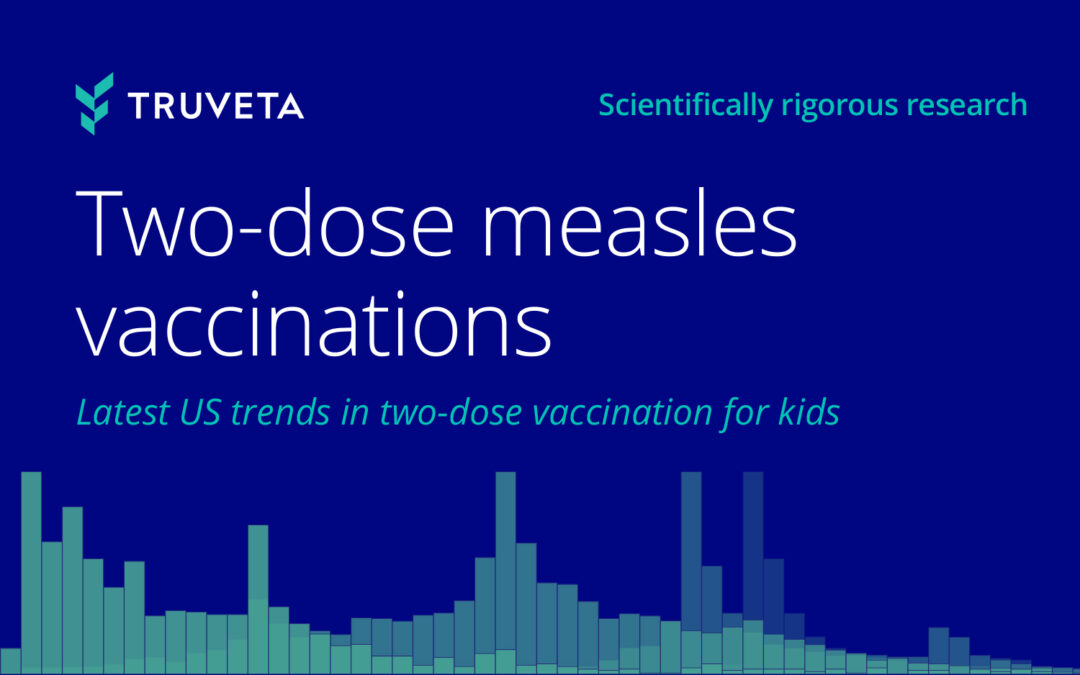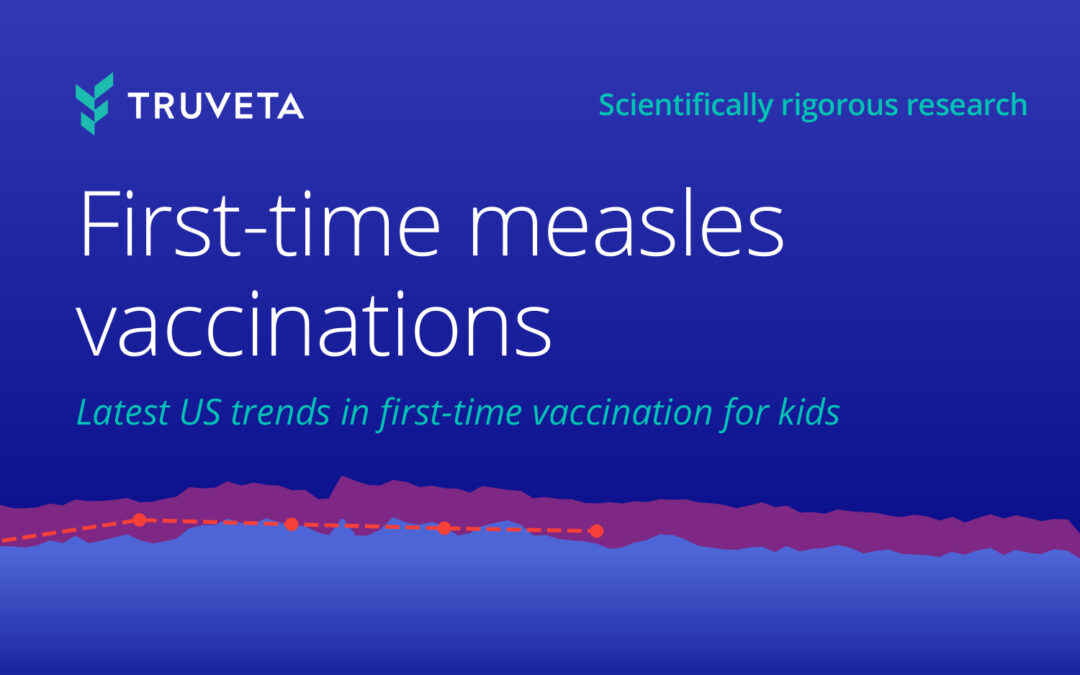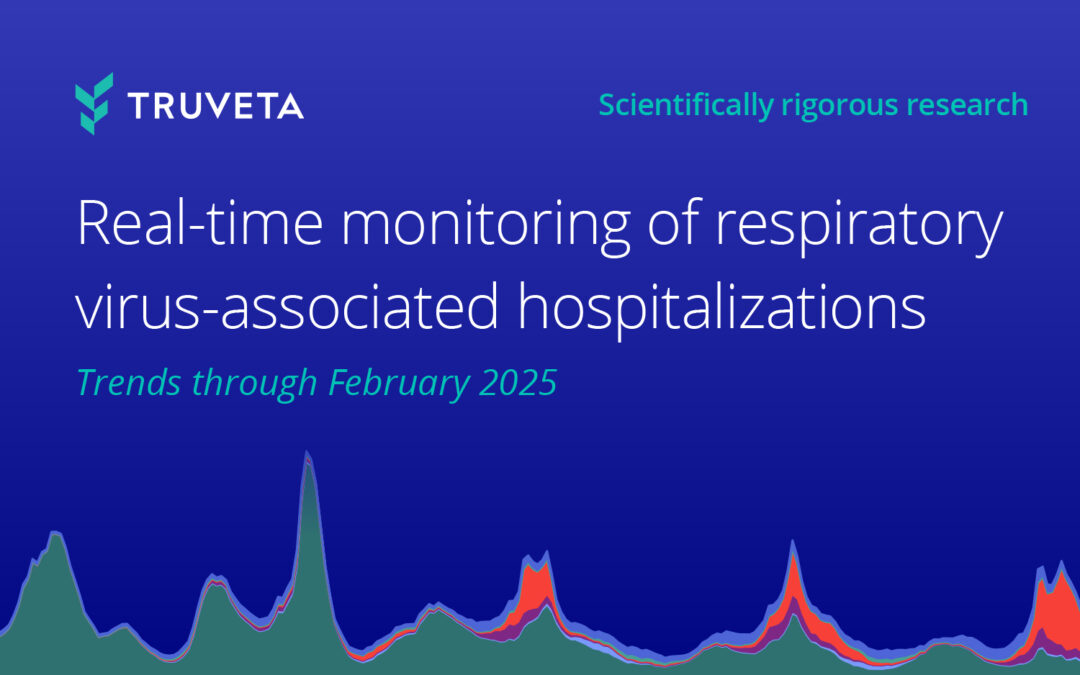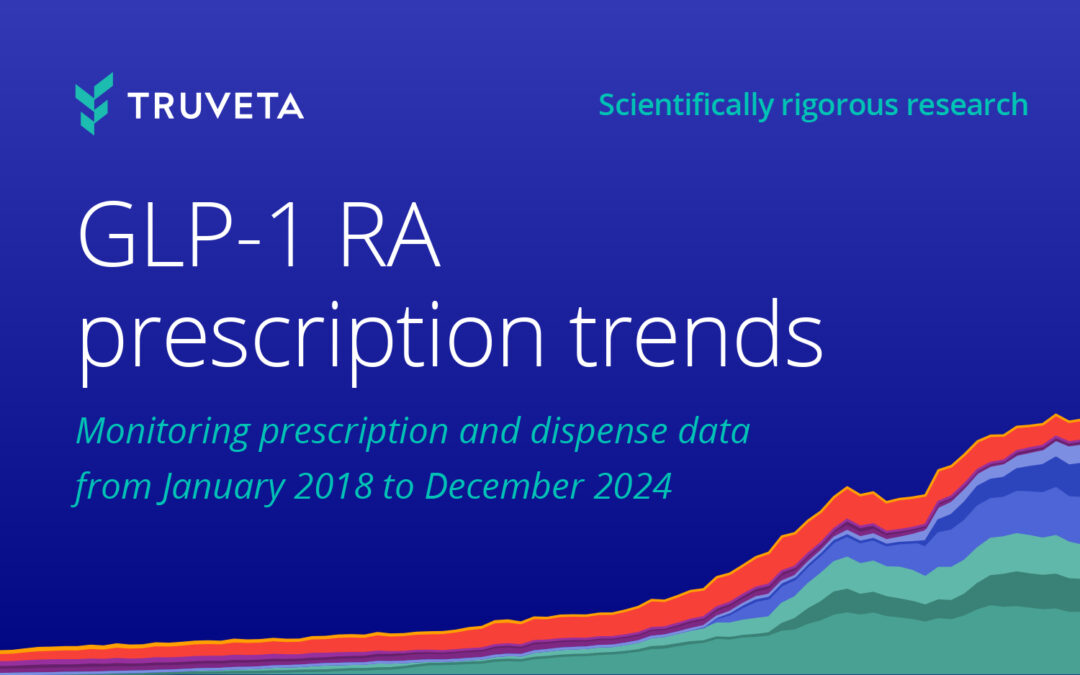- Overall prescribing rates (GLP-1 RA prescriptions per total prescriptions) in March 2025 increased relative to December 2024 (+12.96%).
- Anti-diabetic medication (ADM) prescribing increased from December 2024 to January 2025, then remained relatively stable until March 2025. Among ADMs, semaglutide continues to be the most prescribed medication (1.29% of all prescriptions), although prescription rates decreased (-0.42%). ADM tirzepatide prescribing rates increased +16.65% over the quarter, now at 1.18%.
- Anti-obesity medication (AOM) prescribing increased in March 2025 compared to December 2024 (+17.01%). Amongst AOMs, tirzepatide was again the most prescribed medication (a rate increase of 39.39%). This is the second report with a higher prescription rate for AOM tirzepatide (sold as Zepbound), now at almost two times the rate of AOM semaglutide (sold as Wegovy).
- First-time prescribing rates (first-time GLP-1 RA prescriptions per total prescriptions) increased 12.02% in March 2025 compared to December 2024. First-time prescribing of ADMs decreased slightly in March 2025 relative to December (-6.56%), while first-time prescribing of AOMs increased from December 2024 to January 2025, before remaining relatively stable until March 2025 (+18.63%).
-
- The decreases previously observed in first-time AOM prescribing in November and December 2024 rebounded in January 2025. There was a one-month increase of 18.6% in first-time AOM prescribing between December 2024 (when first-time AOMs accounted for 0.34% of all prescriptions) and January 2025 (when first-time AOMs accounted for 0.41% of all prescriptions). Potential reasons for the December decline could be insurance related or a desire not to initiate a GLP-1 during the holiday season.
Limited recent data exist on prescribing patterns and patient characteristics for GLP-1 RA medications, whether used as anti-diabetic medication (ADM) for patients with type 2 diabetes (T2D) and/or used as an anti-obesity medication (AOM) for patients with overweight or obesity. Interest in these medications has recently accelerated, largely for their weight-loss effects, although access to and use of GLP-1 RA medications may be impacted by high cost, limited insurance coverage for patients without T2D and medication shortages.
To offer insight into the latest trends about these medications, Truveta Research has created the GLP-1 RA monitoring report, which will be updated periodically with fresh, timely data. Truveta Data provides the most representative, complete, and timely patient journey data, including full patient medical records, notes, and images, for more than 120 million patients across the US. Truveta Data is also linked with closed claims for more than 200 million patients. Because Truveta Data is updated daily, we can show the latest trends in these medications.
This blog provides a snapshot of the key findings in the most recent report; including prescribing and dispensing medication (indicates whether the patient picked up the medication) trends. For the full analysis – inclusive of demographics, comorbidities, and social drivers of health data for the population, methodology, additional findings, limitations, and citations – you can view the complete report on MedRxiv or directly within Truveta Studio.
Key findings: Prescribing trends
Using a subset of Truveta Data, Truveta Research identified people who were prescribed a GLP-1 RA between January 01, 2018 and March 31, 2025. We describe prescribing volumes and patient characteristics over time, by medication, and by FDA-labeled use (e.g., ADM, AOM, or unknown).
Overall prescribing trends
The study found that 1,970,374 patients were prescribed a GLP-1 RA between January 2018 and March 2025, with 9,376,686 total prescriptions during this period.
Overall prescribing rates (GLP-1 RA prescriptions per total prescriptions) in March 2025 increased relative to December 2024 (+12.96%).
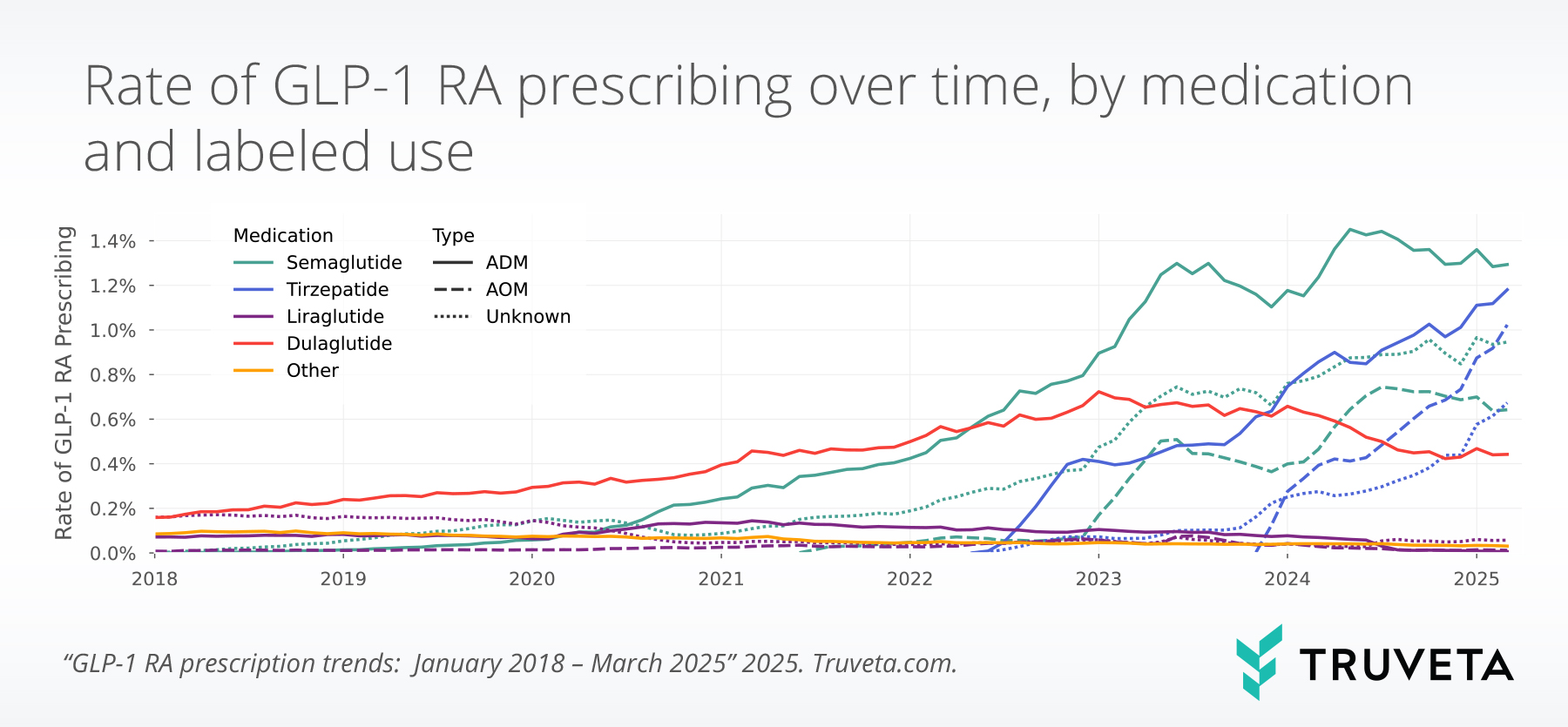

Month-over-month ADM prescribing increased from December 2024 to January 2025, then remained relatively stable until March 2025. Among ADMs, semaglutide continues to be the most prescribed medication (1.29% of all prescriptions), although prescription rates decreased (-0.42%). ADM tirzepatide prescribing rates increased +16.65% over the quarter, now at 1.18%.
Among AOMs, prescribing increased in March 2025 compared to December 2024 (+17.01%). Amongst AOMs, tirzepatide was again the most prescribed medication (a rate increase of 39.39%). This is the second report with a higher prescription rate for AOM tirzepatide (sold as Zepbound), now at almost two times the rate of AOM semaglutide (sold as Wegovy).
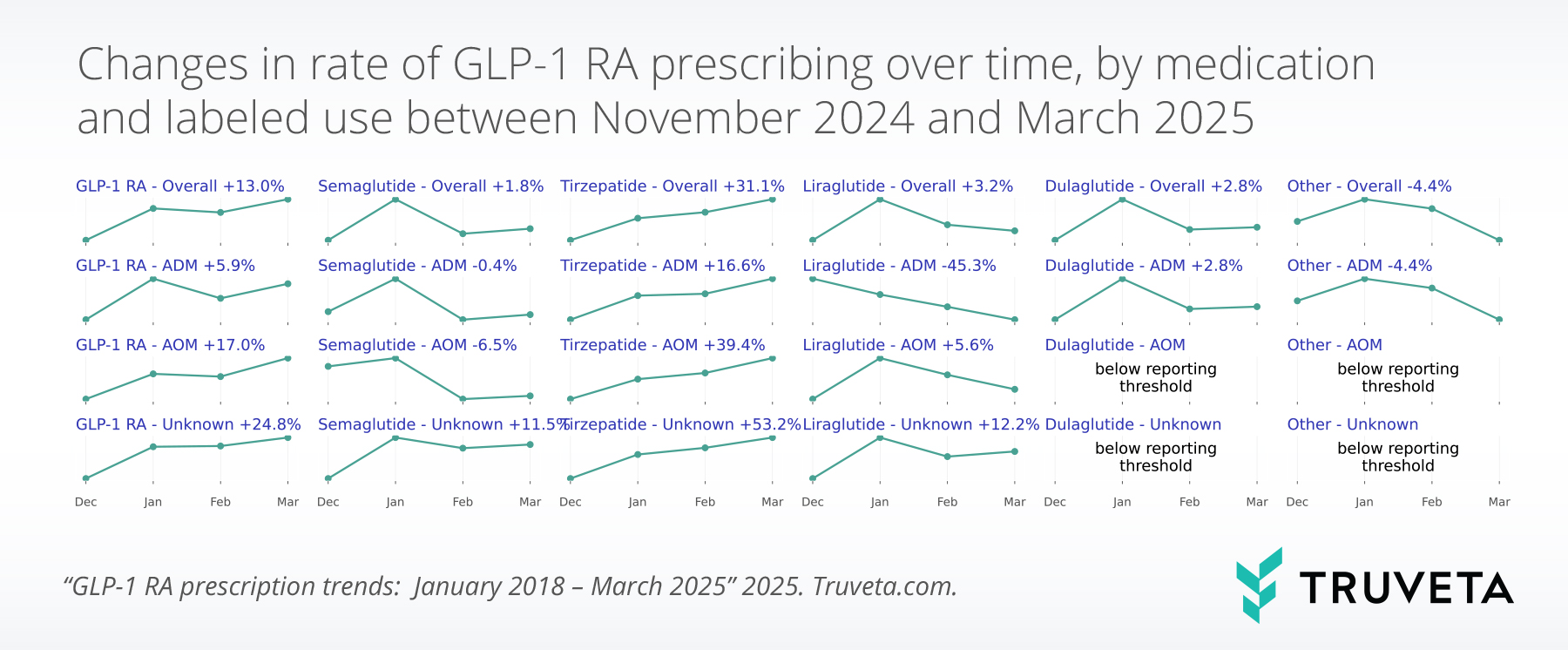
Trends in first-time prescribing
First-time prescribing rates (first-time GLP-1 RA prescriptions per total prescriptions) increased 12.02% in March 2025 compared to December 2024.
First-time prescribing of ADMs decreased slightly in March 2025 relative to December (-6.56%), while first-time prescribing of AOMs increased from December 2024 to January 2025, before remaining relatively stable until March 2025 (+18.63%). Overall first-time prescriptions of semaglutide are down 3.22% over the time period, while overall first-time prescriptions of tirzepatide are up 38.03%.
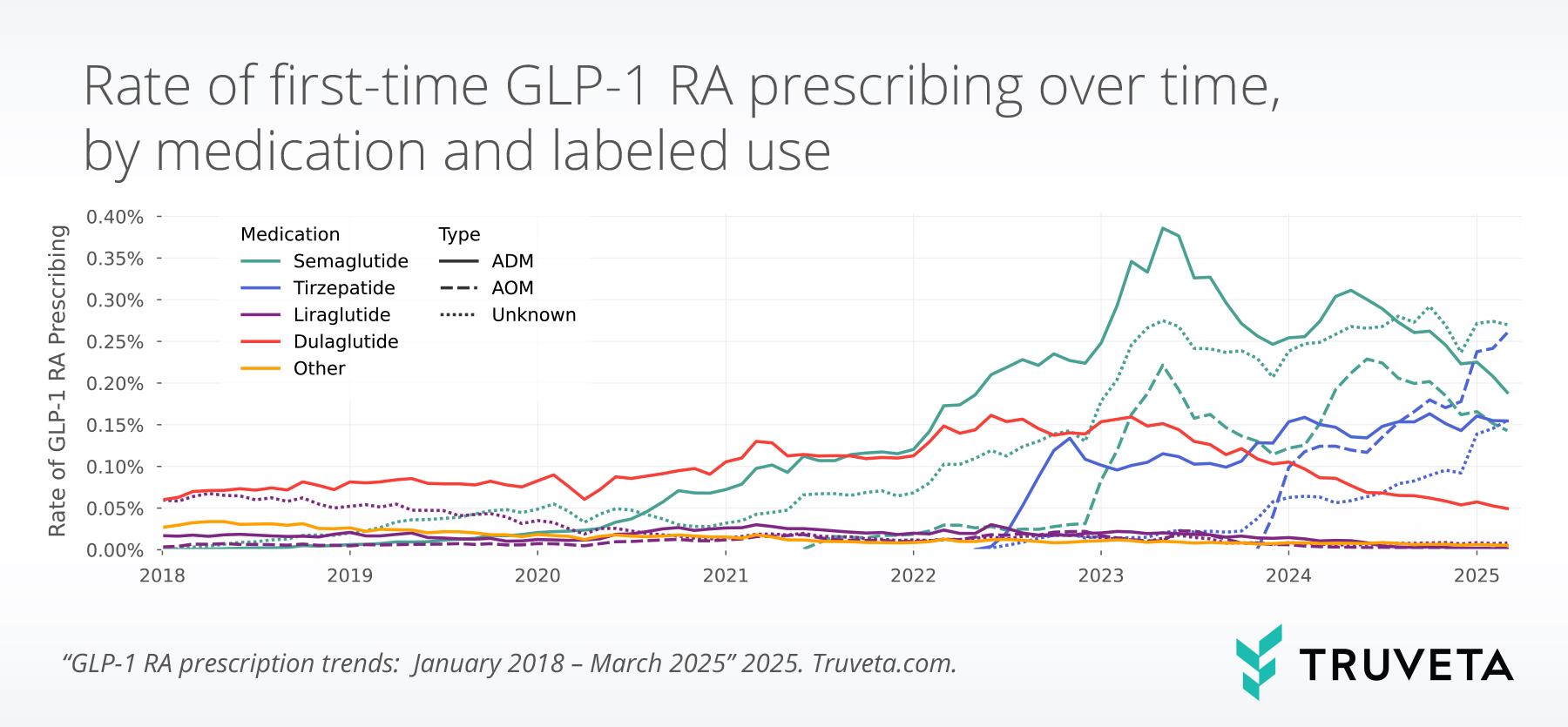

First-time prescribing of AOM semaglutide decreased again this quarter (-11.75%), while prescribing of AOM tirzepatide increased (46.37%). AOM tirzepatide now makes up 0.26% of all prescriptions, vs. AOM semaglutide, which makes up 0.14%. First-time prescriptions of AOM liraglutide also increased in this period (+11.67%).
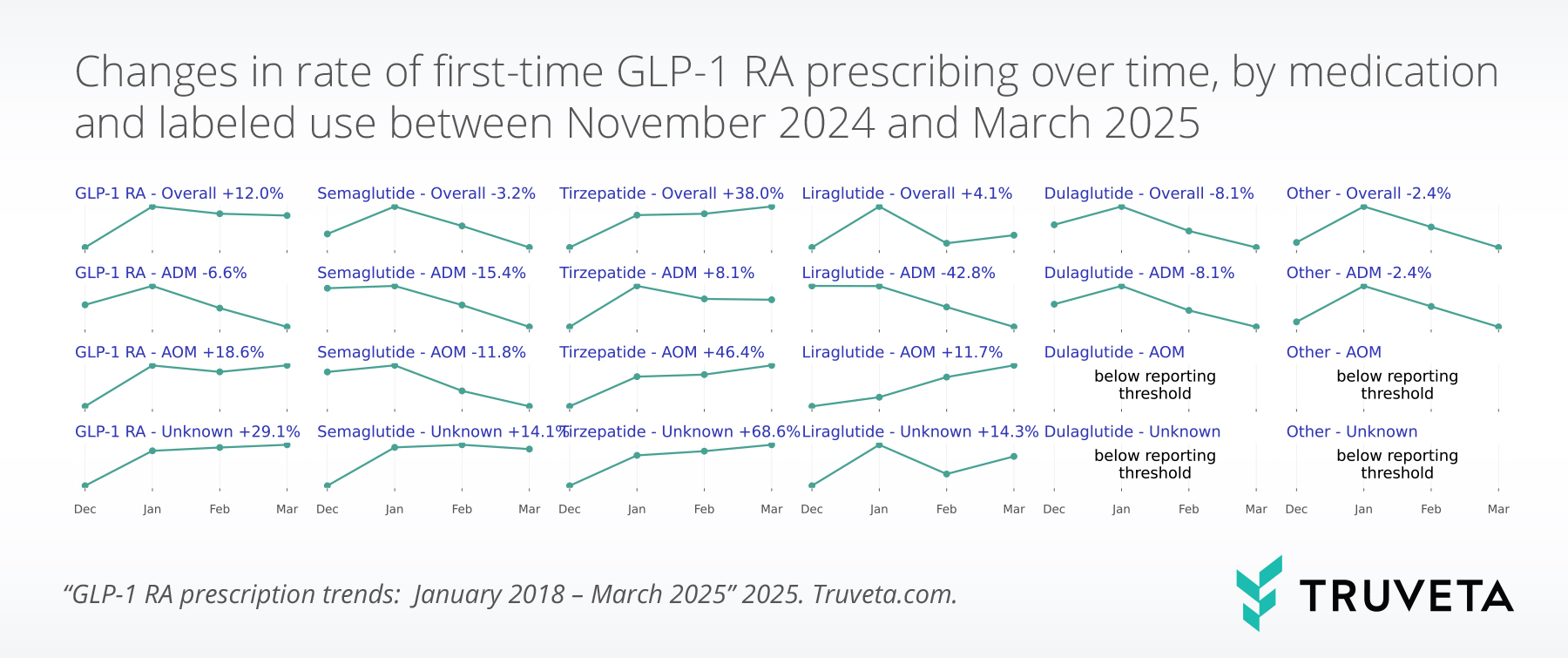
Dispense trends
Dispense refers to prescription fills, indicating that the patient picked up the medication from their pharmacy and provides the closest proxy for use.
During the full time period (2018 – 2024), 70.9% of GLP-1 RA prescriptions had a dispense within 60 days of their prescription (e.g., were initiated within 60 days).
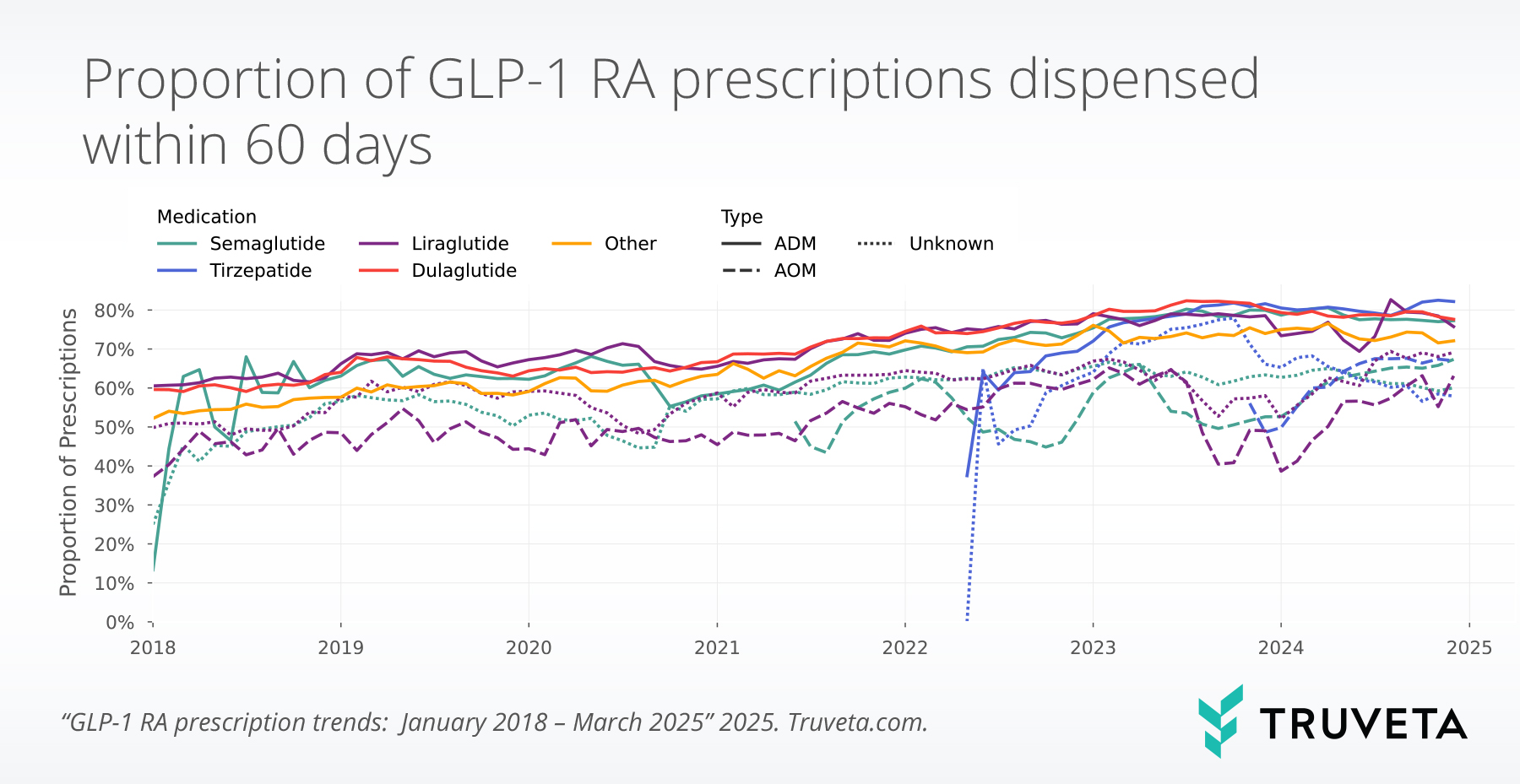
For patients first prescribed an ADM in December 2024, 71.0% filled a GLP-1 RA within 60 days. Initiation rates for ADM GLP-1 RA are about the same in December 2024, relative to September 2024 (+1.92%).
For patients first prescribed an AOM in December 2024, 50.5% filled a GLP-1 RA within 60 days. Initiation rates for AOM GLP-1 RA are about the same in December 2024, relative to September 2024 (-0.43%%).
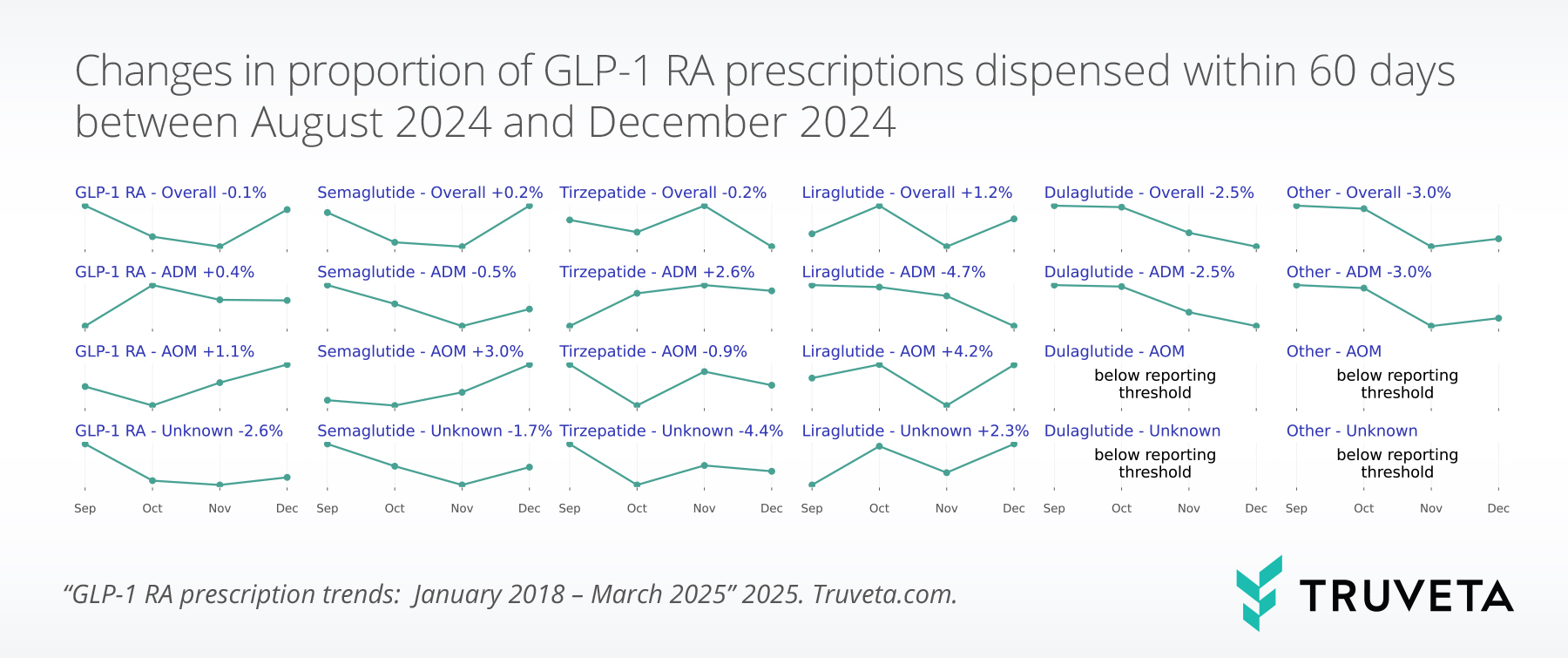
Discussion
With the popularity of GLP-1 RA medications and challenges in access and insurance coverage, we will continue to monitor these prescribing and dispensing trends over time.
The GLP-1 RA monitoring report describes more detailed information about the overall population of patients being prescribed these medications (including demographics and comorbidities), and the proportion and characteristics of patients who filled a GLP-1 RA prescription over time using dispenses. Methodologies, limitations, and citations are also available in the full report. You can also view the full study – including codes, definitions, and more – directly in Truveta Studio.
These are preliminary research findings and not peer reviewed. All data are preliminary and may change as additional data are obtained. These findings are consistent with data accessed April 11, 2025. Data presented in this analysis represent raw counts and/or rates, and post-stratification methods have not been conducted.



